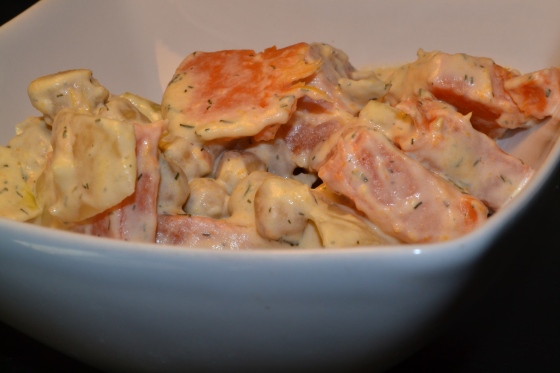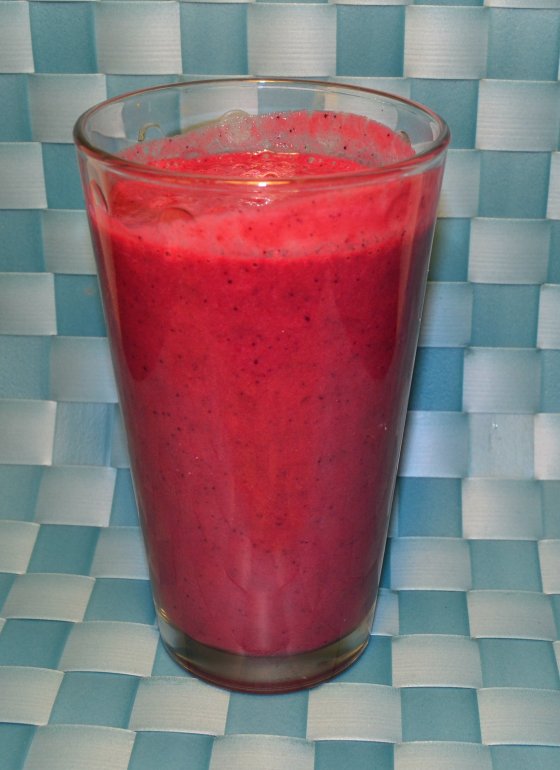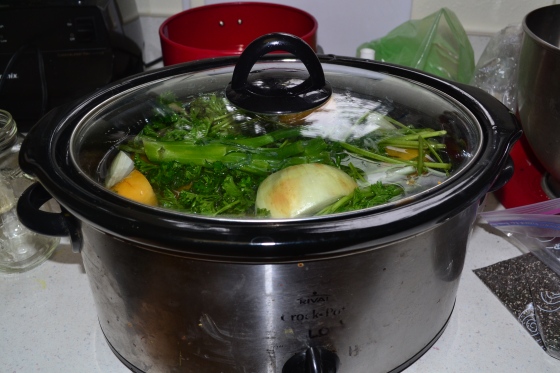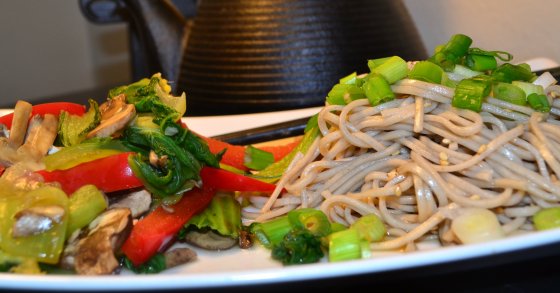Cooking in oil is a thing of the past, at least for me. Heating oil to high temperatures changes its structural composition, changing from a healthy addition to a carcinogen. Coconut oil, which is able to withstand high heat, is all the rage in the health world, however, it has its draw backs; it raises LDL levels, which is the bad cholesterol. Of course, coconut oil has its place. I have some wonderful recipes using it in my cleaning recipes section, (see “So fresh and so clean {the non-toxic way}”)
Also, cooking vegetables in high heat breaks down vital enzymes and kills your food. Below I show you how to healthy saute your vegetables, and the meal I made using this method. Sauteing in stock cooks food at a much lower heat, retaining most of the nutrients and keeping those healthy enzymes in tact.
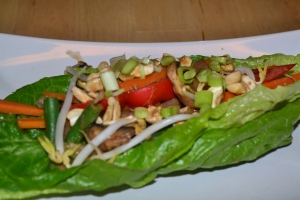
Cashew lettuce Wraps are a simple, fast and easy dinner to make that is so yummy you will make it again and again. I learned this method in the book, “The World’s Healthiest Foods” by George Mateljan. It was required reading for school, and I highly recommend it.
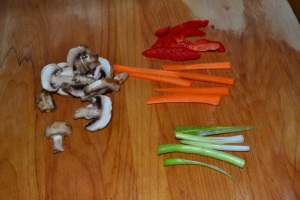
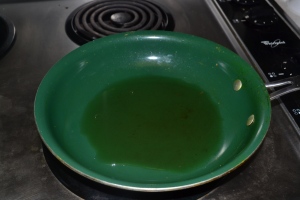
The first thing you want to do is cut your vegetables in 1 inch strips. This will make them cook up in about 3 minutes.
Next, bring 2 tbls of vegetable broth to a boil in a saute pan. Put in all the veggies, cover it up, and let it saute 2 minutes. No more, no less. After 2 minutes, uncover, and let it cook another 1 minute. The broth should evaporate out.
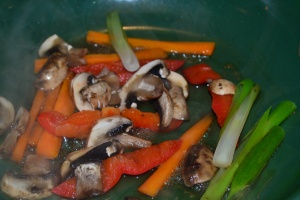
Vegetables wilted after only 2 minutes of healthy saute
That’s all there is to it, that is the healthy saute method. I still use Extra Virgin Olive oil, but only to dress my already cooked vegtables. Onions, peppers, celery, and mushrooms are all cooked using this method. Usually I steam carrots, but for this meal I like to make everything in one pan. Below is the full Recipe for Cashew Lettuce wraps:
Makes 1 serving:
- 2 tbls vegetable stock (I use homemade broth, but if using boxed, find low sodium organic)
- Half of 1 carrot, cut into 1 inch strips
- 4 slices red pepper, 1 inch thick cut length wise
- 1 scallion cut into two pieces, then cut in half length wise. Finely chop and Reserve about 1 tbls of the green sections.
- 4 crimini mushrooms, sliced thin
- 1/4 cup green beans (I used frozen for this recipe, and just threw them in at the end of cooking to warm them up)
- 1 tbls Thai Peanut sauce (I love the one pictured below)
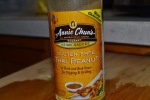
- 2 tbls raw cashews
- 2 large romaine leaves
- 1/4 cup mung bean sprouts
Healthy saute the carrot, pepper, scallion, and mushrooms 3 minutes as mentioned above, remove from heat and toss with Thai peanut sauce. Mix well. Lay the romaine leaves on a plate, one on top of the other. Lay out the veggies so that the romaine leaves cradle around them. Top with mung beans, cashews, and the reserved green scallion. Drizzle with any remaining peanut sauce in the pan.
This dish is a hit with my meat loving husband and it is one that I go to again and again. Although I do enjoy making my own peanut sauce, Annie Chuns is a real winner for its natural ingredients and taste. Plus, its gluten free. And when I’m pressed for time, I really enjoy having one less thing to think about in the kitchen.
Even if you don’t ever attempt this recipe, I hope that you take away how to healthy saute your vegetables. I promise, you will never cook in oil again.

